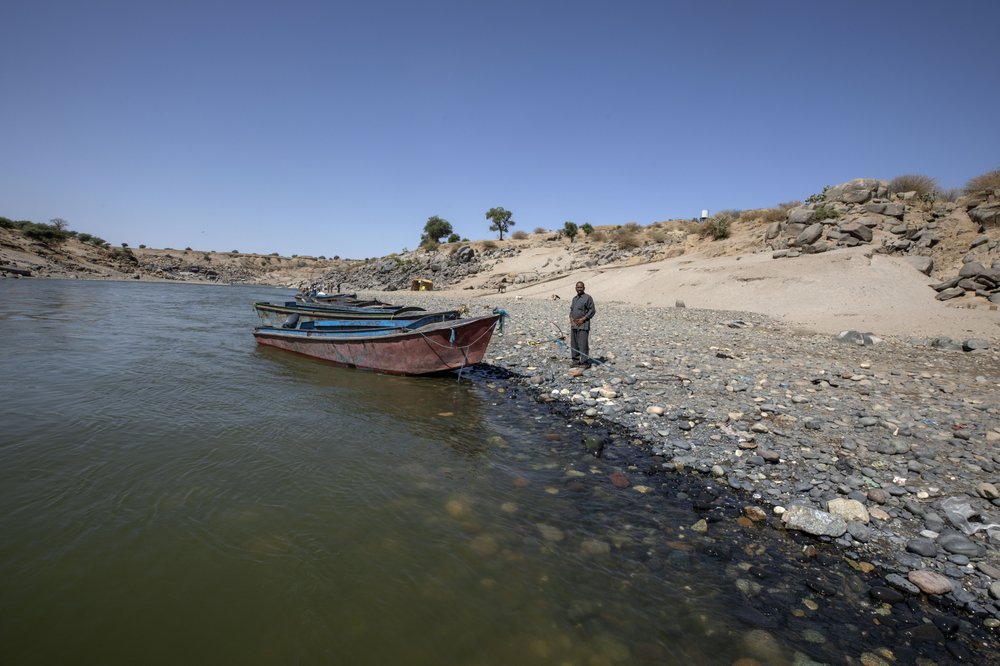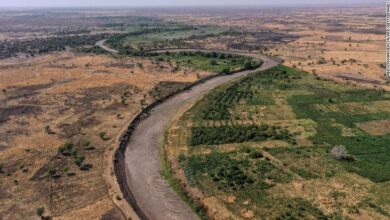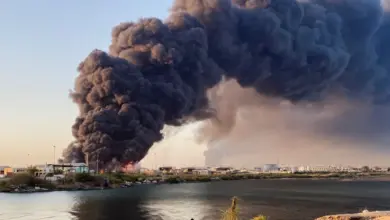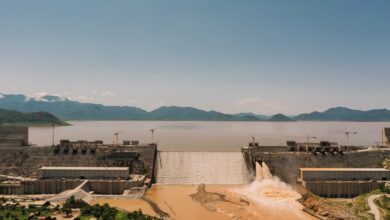
HAMDAYET, Sudan (AP) — Ethiopian forces on Thursday blocked people fleeing the country’s embattled Tigray region from crossing into Sudan at the busiest border crossing point for refugees, Sudanese forces said.
Their account follows allegations by refugees in previous days of Ethiopian forces stopping people from fleeing the month-old deadly conflict in Tigray between Ethiopian forces and Tigray regional forces.
Members of the Sudanese forces, speaking on condition of anonymity because they weren’t authorized to discuss the events, said people tried to cross from Ethiopia around 6 am to Hamdayet in Sudan but were stopped, and refugees waiting on the Sudan side became upset and began throwing rocks.
The Sudanese forces then cleared the area, and on Thursday evening they confirmed that the border crossing remained closed. The Associated Press around midday saw more than a dozen people waiting on the Ethiopian side of the border.
Tensions have been rising at the border in recent days as the flow of Ethiopians crossing has slowed to hundreds per day from several thousand. People continue to flee Ethiopia several days after Prime Minister Abiy Ahmed declared victory in the conflict, and reports of fighting continue in the Tigray region, which remains largely cut off from the world.
A senior Ethiopian government official who has served as spokesman during the conflict did not immediately respond to a request for comment.
Asked over the weekend about refugees’ allegations blocked crossings, United Nations refugee chief Filippo Grandi told reporters that his team had not raised the issue with Ethiopia’s government. But refugees told him about the “many checkpoints” and pockets of insecurity they faced as they fled.
“We have not heard of any systematic sealing-off,” Grandi said. “But certainly there are growing difficulties.”
More than 45,000 Ethiopians have fled into the remote area of Sudan, first straining the generosity of local communities and then challenging the capacity of humanitarian groups that have hurried to set up a system to feed, shelter and care for them from scratch.
Nearly half the refugees are children, the U.N. has said, and many people came with nothing. Refugees have recounted horrific journeys of fleeing attacks and arriving on foot after two or three days of walking in the heat.
Authorities have said they are preparing for as many as 100,000 refugees. But Ethiopia’s government has said it welcomes the refugees to come home for reintegration and has vowed their protection.
Many of the refugees, mainly ethnic Tigrayans, have said it was Ethiopian forces they were fleeing.
“The world is silent. They are not doing anything for us. They are silent,” said one refugee, Geren Hawas. “Until now they didn’t do anything. It has been a month and they didn’t do anything. The world has its laws. People are dying from hunger, by guns, they are dying. Why are they being silent?”
With communications only now slowly returning to parts of the Tigray region said to be under Ethiopian forces’ control, it’s been difficult to verify the warring sides’ claims or know the extent of the devastation.
“I’m hearing reports of thousands of deaths” of civilians and combatants, International Crisis Group analyst Will Davison told an online event on Thursday. But nothing’s been proven, and there’s “no idea what the conflict looks like on the ground … there’s just a huge amount that’s not known.”
“There’s a very high risk we haven’t seen the end of the violence,” Susan Stigant with the United States Institute of Peace told the event. Earlier this week, the Tigray leader told the AP in an interview that fighting continued “on every front.”
The international community has pleaded for dialogue, something Abiy has rejected as the Ethiopian and Tigray governments consider each other illegitimate after a power struggle since he took office two and a half years ago.
The first images from the Tigray capital, Mekele, aired by Ethiopian state media on Wednesday showed residents venturing into the calm streets while Ethiopian soldiers patrolled.
One university student, Aleme Menkussie, told the state-affiliated Fana Broadcasting Corporate that he arrived on campus the day before the fighting erupted on November 4.
“Then communication was shut down,” Aleme said. “And ever since then we have been in fear and worry.”
The UN in a humanitarian update on Thursday said of Mekele that “concerns are growing for the safety of more than 500,000 people living in the city and the well-being of the people who are reportedly relying on untreated water to survive due to damage and destruction of water infrastructure, according to media and humanitarian sources.”
Humanitarian access is finally poised to return to parts of the Tigray region under Ethiopian government control, after a month of growing distress over dwindling supplies of food, medicines and fuel for the population of some 6 million people. Nearly one million have been displaced by the fighting.
However, it is not clear how quickly aid will begin to arrive, as assessments come first.
___




